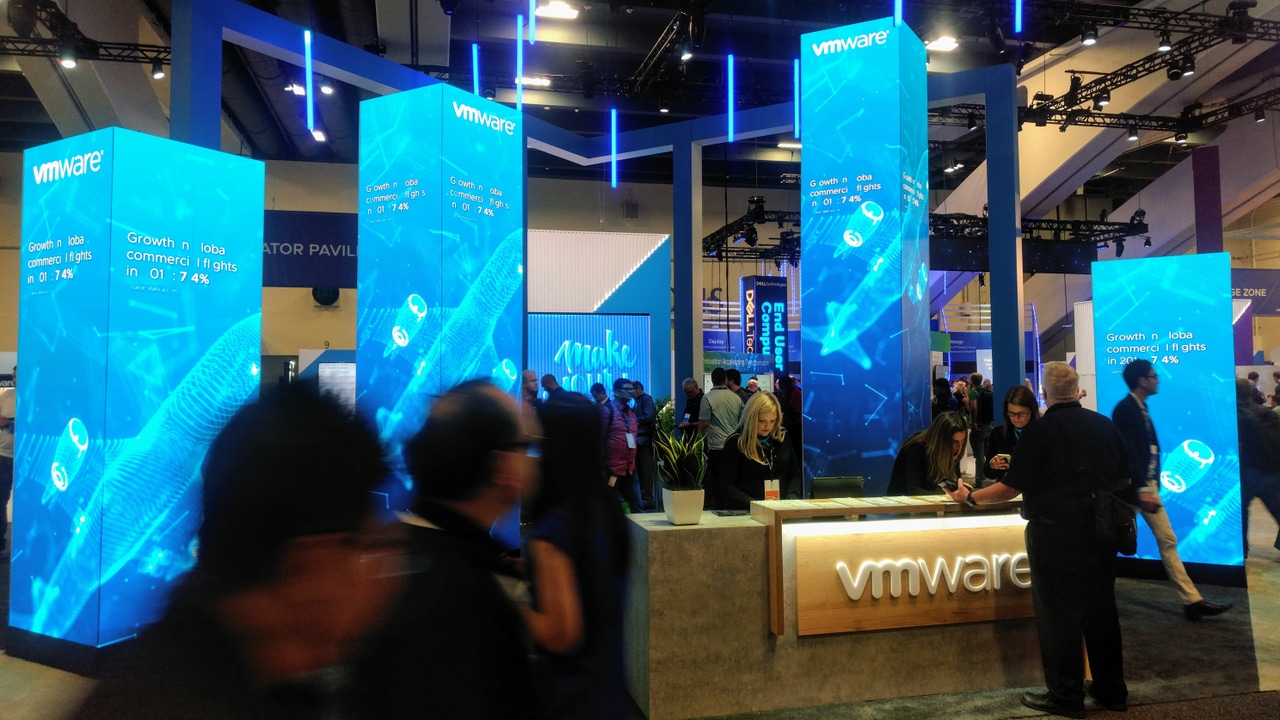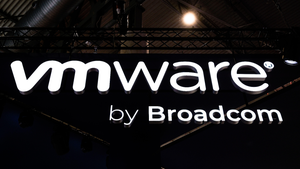
Rivalry between Nutanix and VMware had been heating up for a few years before exploding in an all-out battle this last December. Nutanix lured away one of VMware’s top product executives, Rajiv Ramaswami, to replace its outgoing CEO. VMware – which would soon thereafter also lose its own highly successful chief executive, Pat Gelsinger, to Intel – responded with a lawsuit against Ramaswami, accusing him of breaching his contract.
These were only the latest salvos in a relationship that started as a partnership but eventually morphed into a bitter fight, as the overlap between the markets the two companies compete in grew.
“The lawsuit is a validation of Nutanix as a perceived threat within VMware’s walls,” Matt Kimball, a senior data center analyst at Moor Insights & Strategy, said.
VMware and Nutanix were allies in the early days of the hyperconverged infrastructure market, which Nutanix pioneered. Its first product, launched in 2011, was an appliance that integrated servers, storage, networking, and virtualization. VMware’s vSphere provided the virtualization part. Enterprises loved the concept.
As the hyperconverged-infrastructure market took off, in the mid-2010s, VMware developed its own hyperconverged product, vSAN, while Nutanix released Acropolis, its own hypervisor. Suddenly, they became competitors.
Fast forward to today, and the two are also rivals in the hybrid, multi-cloud market, not just hyperconvergence. Both leveraged their respective hyperconverged infrastructure software to build competing cloud management platforms for managing on-premises data centers and hybrid, multi-cloud environments.
“The space in which these two vendors are competing is only increasing,” Naveen Chhabra, a Forrester Research analyst, told DCK. “Three years back it was only [hyperconverged infrastructure]. Today they are competing on almost every offering.”
Nutanix ‘Needs to Go’ Where VMware Is
Analysts say hiring Ramaswami was smart move on Nutanix’s part. He replaced Dheeraj Pandey, who co-founded the San Jose, California-based company and saw it reach $1.3 billion in annual revenue before retiring.
Nutanix is the young up-and-coming counterweight to the $11 billion juggernaut that is Palo Alto-based VMware. As VMware’s former COO of products and cloud services, Ramaswami knows the hyperconverged infrastructure and cloud management platform business – as well as VMware – inside and out.
“Dheeraj was a dynamic leader. He did an amazing job to build Nutanix, giving it the vision and driving toward that vision. Rajiv can build upon that,” Moor’s Kimball said. “Rajiv has the technical competence and a deep understanding of the space they are competing in. With what Rajiv has done at VMware, he gets the cloud side of the equation, and that’s where Nutanix needs to go.”
Nutanix will continue to compete against VMware in the hyperconverged infrastructure market. Today they are the two hyperconverged infrastructure market leaders. The market reached $2 billion in revenue in the third quarter of 2020, with VMware capturing 40 percent of revenue, followed by Nutanix with 25 percent, according to IDC.
But the market is shifting to the cloud and that’s where the big growth opportunity is, Kimball said. Red Hat OpenShift is the current market leader in the hybrid cloud platform space, followed by VMware, he said.
At VMware Ramaswami helped build and beef up VMware Cloud Foundation, the cloud management platform that’s core to its current strategy, but he also built and fostered strong partnerships with all the major cloud providers.
Nutanix has developed and continues to improve upon its cloud platform to compete against VMware. But it’s just getting started with cloud-provider relationships. It announced partnerships with Amazon Web Services and Microsoft Azure in the second half of 2020.
“Nutanix has been at this, but I don’t think they’ve competed as strongly on the cloud front as they have on the HCI front,” Kimball said. “VMware has the relationships with the major cloud service providers. Nutanix is not quite there. They will get there. But VMware was able to use its market presence to position itself and forge those relationships a bit quicker.”
“For Nutanix to grow the next billion in revenue, they needed someone like Rajiv who has the relationships and understanding of the market and smarts to establish that same kind of presence for Nutanix,” he added.
Impact of VMware’s Lawsuit
Ramaswami’s intimate knowledge of VMware is the reason VMware filed a lawsuit against him in December, accusing him of breaching his contract and duties and unfair competition.
In the lawsuit, VMware said Ramaswami met with Nutanix executives and board members and brainstormed about Nutanix’s future business strategies for at least two months, during which he also continued to participate in meetings to develop VMware’s product roadmap and go-to-market strategies.
VMware argues that Ramaswami should have alerted it of a conflict of interest so that it could take measures to protect itself. Nutanix said the lawsuit was a misguided, unfounded attempt to hurt a competitor.
Legal experts have told DCK that there is no conflict of interest when an employee interviews and takes a job with a competitor. They said Ramaswami was well within his rights to brainstorm and demonstrate that he’s knowledgeable, full of ideas, and has good experience during the interview process. VMware’s case appears to be weak, unless it can show that Ramaswami disclosed trade secrets or actively competed against VMware while still employed there, they said.
As Nutanix’s CEO, Ramaswami needs to put the appropriate firewalls in place to ensure he doesn’t compromise his ethical obligations to VMware, Kimball said.
“There is inherent cloud knowledge that is not VMware-specific that Rajiv brings to the equation,” he said. “He is a Ph.D. in electrical engineering and computer science at UC Berkeley. He worked at Cisco and Broadcom. He is smart and understands networking and the cloud business. He’s a great choice to run the business and brings operational excellence to Nutanix as it pursues its next phase of growth. He brings a lot of knowledge outside of VMware’s intellectual property and VMware Cloud Foundation."
Until resolved, however, the lawsuit brings uncertainty for Ramaswami and Nutanix, Chhabra said. The exec is on “shaky ground” because he may now have to spend a lot of time on litigation, he explained. “Until the dust settles, it will continue to be shaky.”
VMware is facing uncertainty of its own – outside Ramaswami’s departure, Chhabra added. In January its CEO Pat Gelsinger announced that he was leaving to take the helm at Intel. He plans to step down on February 12, and VMware’s CFO, Zane Rowe, will take the helm as interim CEO until a permanent replacement is found.
VMware’s next CEO could continue the direction and plans that VMware’s previous regime laid out, but the company’s new leader could also change strategies, Chhabra said.
“It’s always unsettling with a change,” he said. “That may last a quarter or two, three or four quarters, you never know.”
Losing both Gelsinger and Ramaswami within months of each other will have an impact, Chhabra said. But Gelsinger does leave behind a company that is in a strong financial and competitive position, having tripled revenue during his eight years at the wheel, he said.
“There is no other company in the data center infrastructure market that has grown that much in the last eight years,” Chhabra says.
Kimball agrees that VMware is in a great position.
“As a company and with its portfolio of products, they are rock-solid and will continue to be. They are like Microsoft in the mid-1990s when they ruled the data center from top to bottom and seemed invincible,” Kimball said. “They are so good at adapting to market shifts and changes.”
When hyperconverged infrastructure emerged, VMware embraced it and quickly made it a big business for itself. When it was clear that cloud would hurt the on-premises virtualization market, VMware partnered with all the cloud providers to make sure there is tight integration between on-premises and cloud environments. Now they have a thriving cloud business, he said.
“VMware consistently takes perceived threats to its business and operating model and turns them into market opportunities,” Kimball said. “Never underestimate them.”
What’s Next?
Can Nutanix make inroads against VMware in the cloud management platform space? Time will tell. Kimball said Ramaswami first needs to make sure Nutanix is operationally sound and running efficiently. For the cloud business, he needs to make sure it has strong partnerships with AWS, Azure, Google Cloud Platform, and all the other major cloud vendors.
Ramaswami also needs to make sure Nutanix’s cloud management platform is robust and can enable hybrid and multi-cloud management, from Kubernetes management to security, he said.
While VMware has worked to solidify VMware Cloud Foundation’s positioning by adding support for its Tanzu Kubernetes solution, Nutanix is also continuing to make improvements. In September, the company enhanced its hybrid cloud offerings with a Kubernetes cloud service to help enterprises build and deploy containerized apps that can run on-premises and in the public cloud.
Ramaswami “needs to put together a strong execution plan and make sure the product is fully fit to compete,” Kimball said. “Is the product depth rich enough? I personally don’t know whether it’s a big gap, no gap, even, or an advantage for Nutanix. But I’m sure he knows.”
As for the hyperconverged infrastructure market, Nutanix is a formidable competitor against VMware with good market share, Kimball said.
“Nutanix is already a big thorn in VMware’s side. They are a direct threat in the HCI space,” he said.
Chhabra has evaluated VMware’s and Nutanix’s solutions. His verdict? They are both leaders in the market and their products are very much on par with each other.
Dell, which owns 81 percent of VMware, sells VMware’s hyperconverged infrastructure software as part of a Dell EMC VxRail HCI appliance. Meanwhile, Nutanix has built strong partnerships with other vendors, such as Hewlett-Packard Enterprise and Lenovo, analysts said.
“Nutanix is becoming a major force in the industry,” Chhabra said. “Nutanix is forging a series of technology partnerships to increase overall adoption of its platform. That will eventually increase enterprise customers’ confidence that Nutanix could be a platform of choice for them.”
About the Author
You May Also Like









